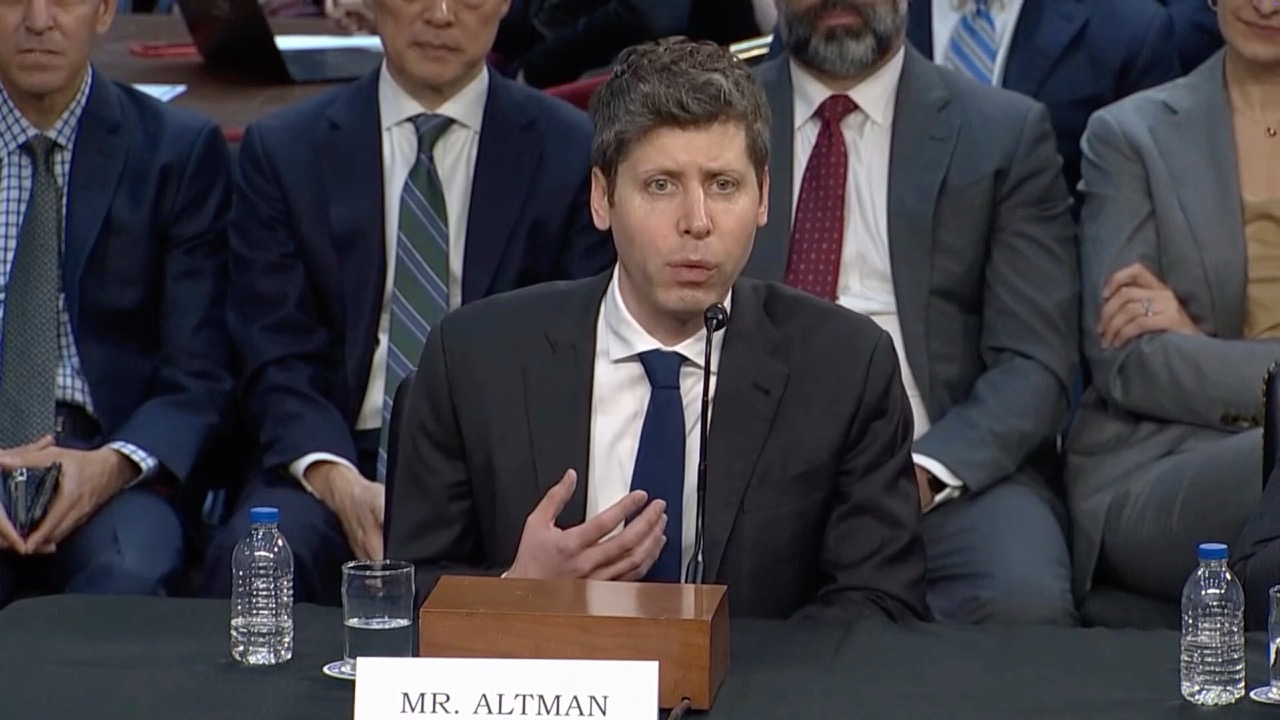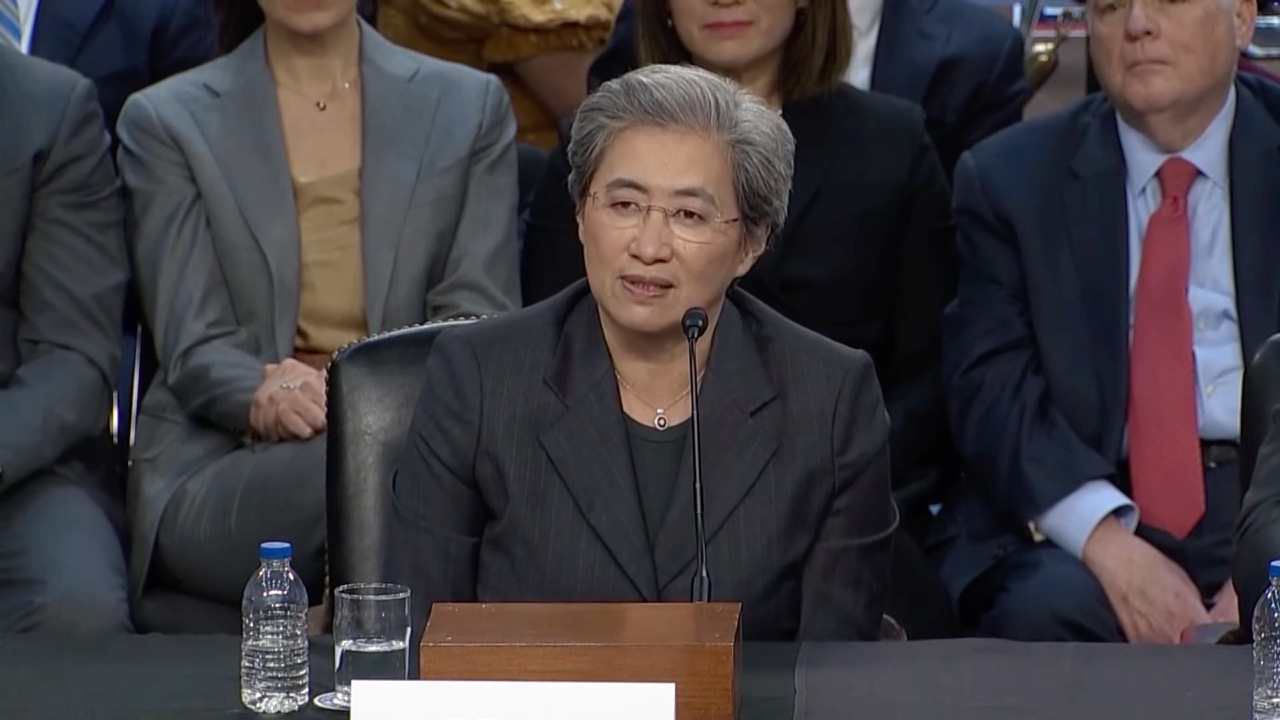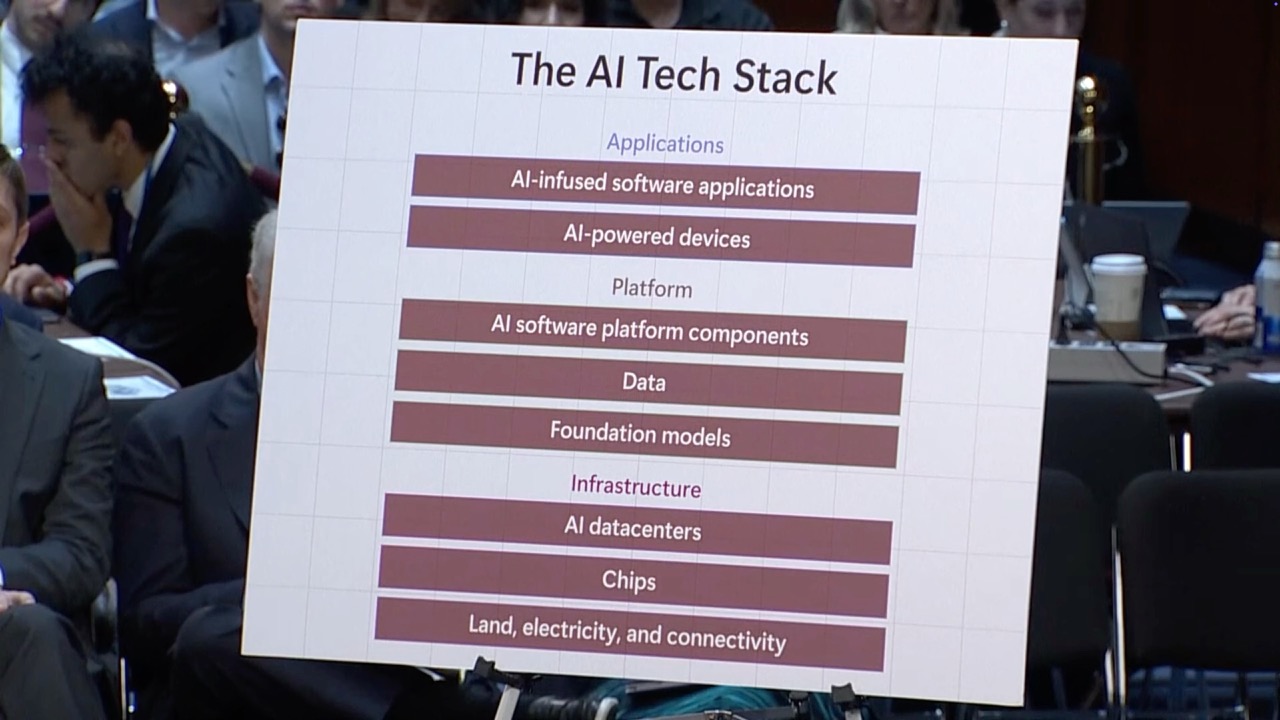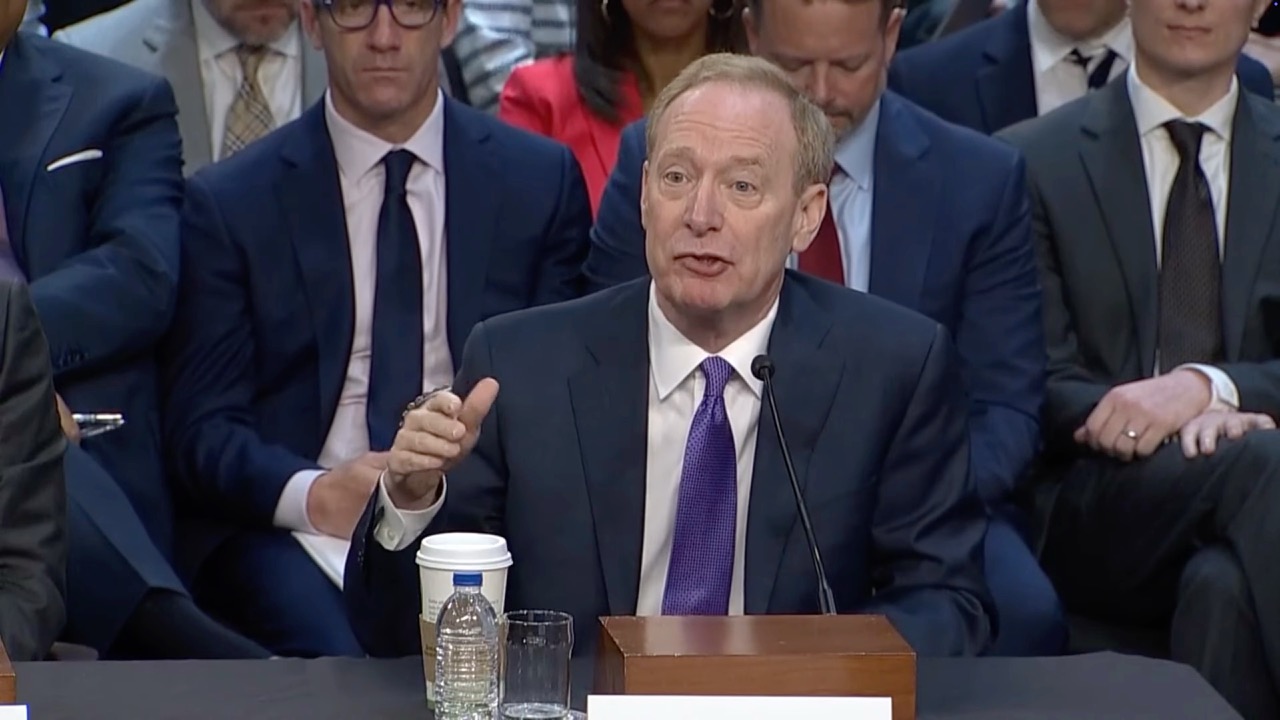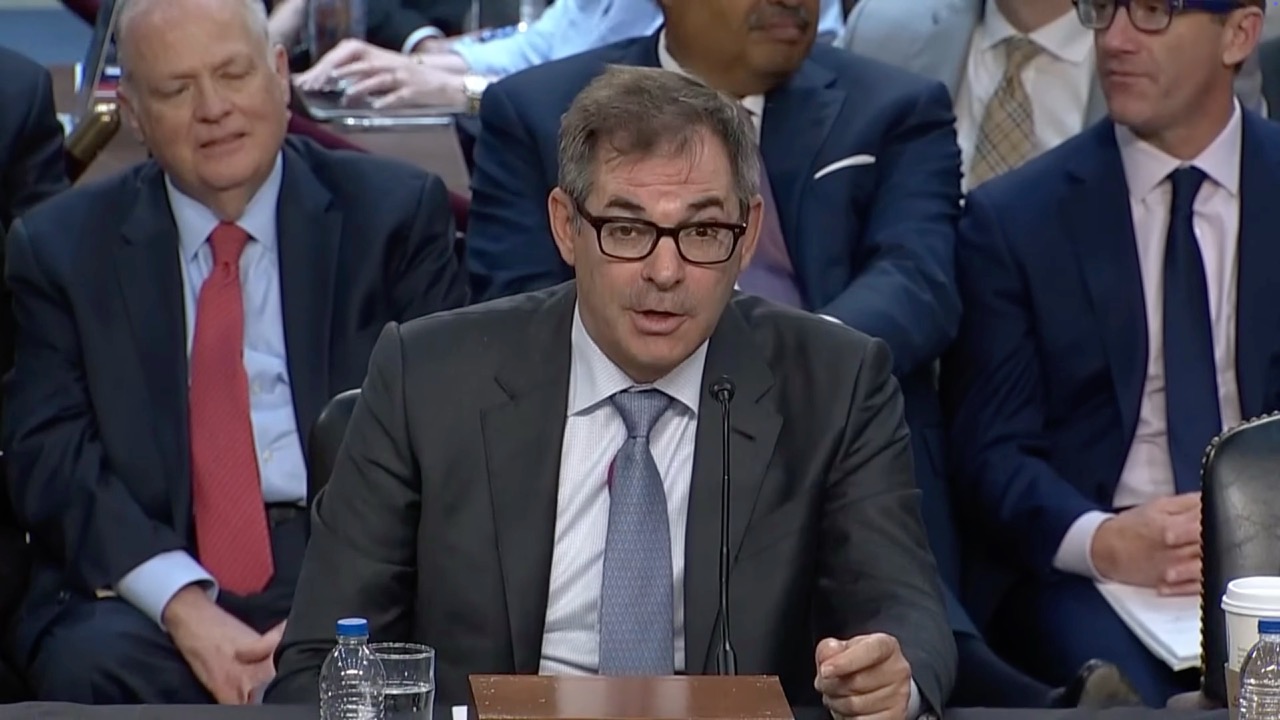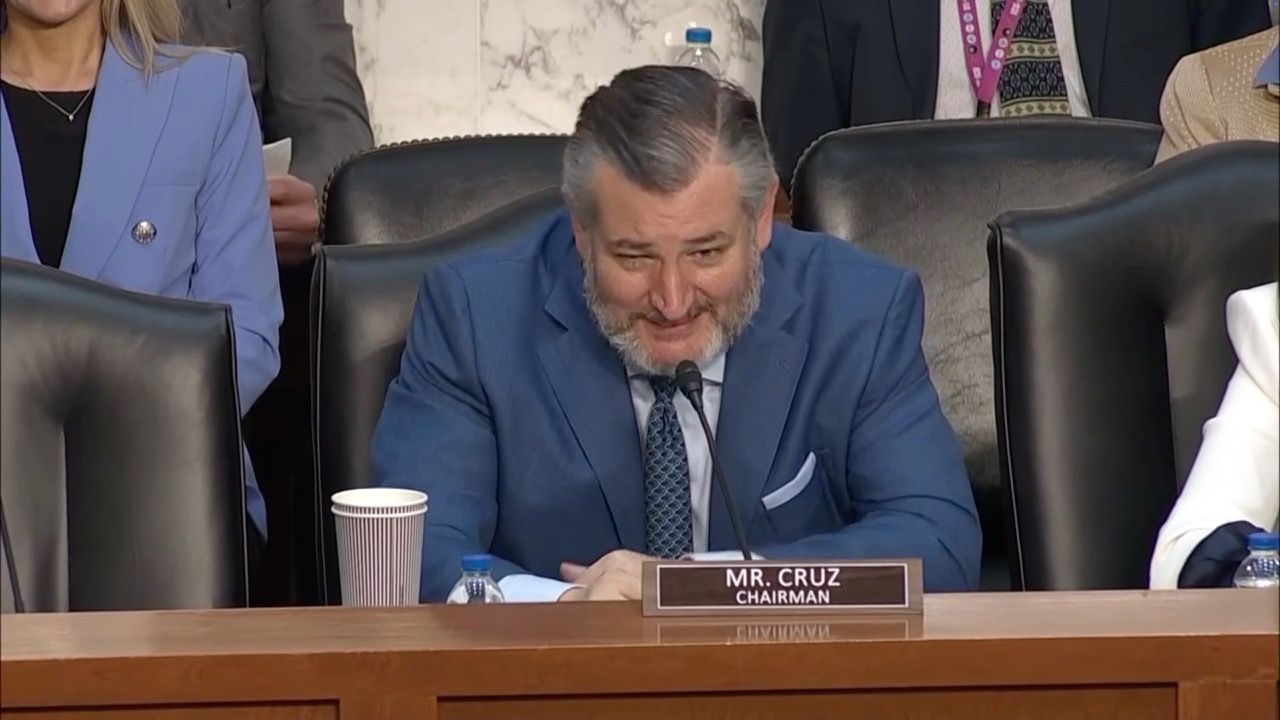AI Summary
In a Senate AI hearing, four prominent tech CEOs, Sam Altman (OpenAI), Dr. Lisa Su (AMD), Michael Intrator (CoreWeave), and Brad Smith (Microsoft), underscored the urgency for the U.S. to maintain its lead in the global AI race. They presented a unified message emphasizing the interdependence of the entire AI tech stack (infrastructure, platform, applications), the massive need for energy and specialized infrastructure like data centers and chips, and the importance of fostering American talent.
In the opening statements of the Senate AI hearing that could shape America's technological future, four of the nation's most influential tech leaders made their case for how the United States can maintain its lead in the global artificial intelligence race. OpenAI CEO Sam Altman, AMD CEO Dr. Lisa Su, CoreWeave CEO Michael Intrator, and Microsoft Vice Chair Brad Smith offered passionate testimony that was as much about American innovation as it was about technical capability.
The Personal and the Patriotic: Tech Leaders Share Their Origin Stories
What became immediately apparent in Thursday's hearing was how personally invested each executive is in America's technological leadership. Their testimonies weren't just business assessments but deeply personal narratives about American innovation.
Sam Altman, whose ChatGPT has become the fifth most visited website globally with over 500 million weekly users, deviated from his prepared remarks to share a nostalgic story of growing up in St. Louis. "I lived in the attic and I had this computer and I would stay up all night and I would learn to program," he recalled, drawing a direct line from those late nights to founding OpenAI. "I am a child of the internet revolution. I have the great honor to be one of the parents—of the many parents—of the AI revolution."
Dr. Lisa Su of AMD similarly shared her early computing experiences: "I grew up in New York. I'm a little older than Sam. So my first computer was a Commodore 64 and then I graduated to the Apple 2." These weren't just reminiscences but arguments for America's unique innovation ecosystem.
The AI Tech Stack: A Unified Front
The four executives presented a surprisingly unified message: American AI leadership requires excellence at every layer of the technology stack, and they're all interdependent.
Brad Smith of Microsoft highlighted this interdependence with a visual aid showing the AI tech stack. "We're all in this together," Smith emphasized. "Our success, each of our success depends on each other's success." This tech stack consists of:
- Infrastructure - The physical components needed for AI, including data centers, cooling systems, chips, and energy
- Platform - The software systems that enable AI development and deployment
- Applications - The consumer and business-facing tools that put AI to work
The Infrastructure Challenge: Energy, Chips, and Data Centers
Perhaps the most urgent concern raised was the massive infrastructure required to power the AI revolution. Michael Intrator of CoreWeave, whose company has seen revenue surge by 12,000% in just two years to reach $1.9 billion in 2024, emphasized that "Modern AI requires specialized infrastructure, purpose-built computing capabilities that surpass traditional cloud computing in scale and performance." The numbers he shared were staggering. CoreWeave:
- Operates more than 30 data centers across 15 states
- Manages more than 250,000 GPUs
- Currently uses 360 megawatts of power
Altman mentioned visiting Abilene, Texas, where OpenAI is building "what will be the largest AI training facility in the world." He described an "AI factory" supply chain of "energy, chips, standing up data centers, building the racks and more."
Dr. Su, whose company builds the high-performance computing chips powering much of today's AI, underscored that maintaining America's lead "requires excellence at every layer of the stack" and pointed to AMD's partnerships with government entities that have resulted in the two fastest supercomputers in the world.
Energy emerged as a critical concern. Intrator called for "abundant and affordable supplies of energy" and "careful reforms in permitting and regulatory process... to accelerate infrastructure projects, facilitate more rapid construction, interconnections, and energy for data centers."
This challenge is not theoretical. Since 2018, the computing power necessary for advanced AI models has multiplied approximately 100,000-fold, according to Intrator.
Policy Recommendations: A Four-Point Plan
While China loomed large as America's primary competitor in AI, the executives suggested that America's democratic values give it a competitive advantage if properly leveraged.
Altman stated plainly, "I don't want to live in Europe either," suggesting that America's innovation-friendly policies create a better environment for technological advancement than the EU's more regulatory approach.
Brad Smith framed the AI race in human terms: "Are we trying to build machines that are better than people? Or are we trying to build machines that will help people become better?" he asked rhetorically. "Emphatically, it is and needs to be the latter."
The executives offered several concrete policy recommendations:
- Strategic investment stability - Clear and consistent policy frameworks across jurisdictions to enable long-term investment
- Energy infrastructure development - Streamlined permitting and regulatory processes for energy projects
- Global market access - Calibrated export controls that address security concerns while supporting global diffusion of American AI
- Public-private partnerships - Collaborations between industry, academia, and government
Su emphasized that while export controls are necessary for national security, "if we're not able to have our technology adopted in the rest of the world, there will be other technologies that will come to play."
All four executives emphasized the importance of developing American talent for the AI age.
"The United States should be the best place to study AI, to work in AI," Su stated, calling for significant public-private partnerships in education.
Smith agreed: "The number one ingredient for [AI adoption] history shows time and time again is skilling—investing in education."
Looking Forward: The Next Generation of Innovation
The executives framed AI as a transformative technology on par with the internet revolution—or potentially even more significant. Altman said:
I believe this will be at least as big as the internet, maybe bigger, suggesting that the next decade will be about abundant intelligence and abundant energy.
Dr. Su called AI "truly the most transformative technology of our time," while cautioning that American leadership is "absolutely not guaranteed" and describing the development of AI as "a race."
Altman concluded his testimony with an evocative image of visiting his childhood home in St. Louis: "I looked up and in that top floor window, the light was on and I thought, you know, hopefully there's some kid in there staying up late at night playing with ChatGPT figuring out how he or she is going to start whatever company comes next."
Smith echoed this sentiment: "Tonight across America, whether it's the attic of a house or the basement or just an everyday bedroom, there are kids with computers, with phones, with access to the internet, and now the ability to put AI to work."
America must ensure that "what happened with the internet... happen[s] again" with AI
As the hearing concluded, the message from all four executives was clear: America stands at a technological crossroads with AI, and the decisions made now will shape the nation's economic and security landscape for decades to come.
We are at a critical juncture in the global AI competition. The nation that leads in infrastructure will set the global economic agenda and shape human outcomes for decades.
Yet despite the challenges ahead, the prevailing tone was one of optimism about America's ability to lead this technological revolution—if the right investments and policies are put in place.
In the words of Chairman Cruz, who set the tone for the hearing, America must ensure that "what happened with the internet... happen[s] again" with artificial intelligence. The question now is whether policymakers will heed the advice of these industry leaders and create the conditions for another generation of American technological leadership.
Recent Posts
